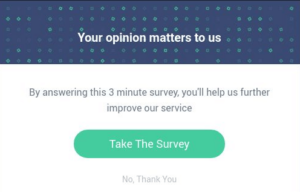(MK-phtograp55/Shutterstock)
Nobody wants unhappy customers. It’s not good for business, and it indicates that something may be wrong. So when you have customers voicing concerns, or filing complaints, you might want to listen.
Companies today have all sorts of data-driven mechanisms to track their customers. Data tells them who they are, what they buy, where they’re from, and what they’re likely to do next. If they lack a particular piece of data they know to be useful, they can seek it on the open market.
But there’s one piece of data companies already possess, but which they’re not making much use of, according to data scientist Marcia Tal: customer complaint data.
Tal, who spent 25 years at Citigroup before founding her New York consultancies, Tal Solutions and PositivityTech, says she was taken aback by the lack of progress in analyzing complaint data.
“I think it is so much more valuable than I ever anticipated,” said Tal, who led the team that built the decision management function across 40 channels at Citigroup. “The amount of investment that has been put into this is still totally nascent.”
Complaint as Journey
Complaint data plays a role in journey analytics, where companies seek to track customer journeys with that company in hopes of maximizing customer satisfaction and, of course, spending. Journey analytics has been an area of active interest among big data and analytic groups for decades.
The trouble with complaint data is that payoff may be well down the road, or it may never occur. It’s definitely not one of the easier fruits to pick from the Big Data Tree, according to Tal.
“It’s the lychee that’s at the top of the tree that you have to climb on someone’s shoulders to get,” she tells Datanami.
Just the same, at this stage in the big data analytics game, Tal finds it surprising that more companies haven’t put more effort into making use of complaint data.
“The tools are available, the data is available, but culturally, do you actually think about and treat the interactions that you have with customers like valued data assets?” she says. “At the end of the day, I say that customers tell you what they’re going to do.”
Strategic Impact
Tal isn’t interested in using complaint data to spot unhappy customers so they can offer them a coupon for 20% off on their next visit. She’s not interested in working the sentiment analysis angle to understand how a customer or customers feel about their business.
What she’s interested in is spotting signs of more serious problems that may be brewing within the company, out of sight (and mind) of the executives making the big decisions.
For instance, a customer may file a complaint when they have a dispute with the company over a transaction. At a credit card company, the clock starts ticking once that complaint is filed with a regulator, and the company has six months to resolve that issue. If the problem hasn’t been resolved after six months, the company will often write off the amount and declare the matter resolved.
“Organizations will spend hundreds of millions of dollars just to get a couple of basis points improvement on that loss rate,” Tal says. “But yet a complaint isn’t viewed in the same way. And my point of view is that it can be, because its impact can be as valuable.”
Data analytics groups are inundated with data, and sorting out the valuable information from the noise is not easy. Amid that tsunami of noise, companies will often wait until they see a certain volume of complaints around a certain topic–say, abnormally long hold times –before they take action.
The opportunity, as Tal sees it, is that companies could potentially save hundreds of millions of dollars by taking a more proactive approach to analyzing customer complaint data when the volumes are smaller, and nipping those problems in the bud before they bloom into serious issues.
“It might be a year or two years before something shows up. And we’ve seen that the question is, what would you do with it when it’s still a relatively small volume?” she says. “That’s really the question at hand.”
The Long Tail of Complaint Data
Marcia Tal has been doing “big data” since before big data was a thing. She has four decades of experience at Citibank and other firms, and has seen analytic trends come and go. She has worked with many types of data, and customer complaint data stands out to her because it’s difficult to work with but holds so much promise.
Customers are telling the companies they do business with all sorts of things in the complaints, but are they listening? In many cases, they’re not.
“A complaint is on a journey,” Tal says. “It could start as an inquiry. It could start as a question. It could start as a complaint. And it takes on its evolution and that evolution responds to whatever stimuli it received back, which could be in whatever channel that was, and it could cause more friction or less friction. It could cause a lot of things to happen. And the magnitude of how widespread that is a lot more scientific than I might have ever thought.”
Mining the long tail of customer complaint data isn’t easy. Despite the rapid evolution of natural language processing (NLP) due to large language models (LLMs) like OpenAI’s ChatGPT and Google’s Gemini, there are no silver bullets to getting value out of this type of data.
When Tal engages with clients to mine customer complain data, she prefers to work with the raw call logs. Summaries of customer conversations don’t work because they are the result of an employees’ filter, and the signal that Tal is looking for will often disappear in that filter. While LLMs may have a place in some areas, Tal and her team use custom-built NLP tools for the critical analyses.
“I’m not necessarily asking for sentiment. I’m looking for specific operational and or strategic actions that you would take as a result of what is transpiring,” Tal says. “It’s a bit of an iterative human-machine process. At least that’s where I think the state of the art is today. It may not be that way in another five years, but that’s what I think it is today.”
The tail of complaint data is “so long that it’s surprising,” Tal says. “Customers start to tell you where there are problems. They’re not doing that because they want to share their problems, but because they have real problems. Or they’ve experienced something and they’re seeking a resolution.”
At the end of the day, people want to be heard. That’s not easy in today’s corporate environment, where automation is the name of the game. Staffing human call centers costs a lot of money, and so companies are inclined to hand customer interactions off to chatbots. That may be conducive to profitability, but it also risks alienating customers.
Tal is waiting for service companies to embrace the same sort of dedication to “total quality management” that American manufacturers embraced half a century ago to improve the value of their products. There is an opportunity to improve customer service using customer complaint data and NLP tools, but it requires companies to step out of their comfort zones.
“Every sector can benefit from this,” she says. “If brands would demonstrate that they’re actually doing something with it, maybe we’d hear from more people. And if we’d hear from more people, then we would really be able to develop and improve our products and services.”
Related Items:
A New Era of Natural Language Search Emerges for the Enterprise
Do You Have Customer Data You Can Trust?
Journey Analytics: A Killer App for Big Data?
Source link
lol




